#Alaeddin Mosque
Explore tagged Tumblr posts
Text
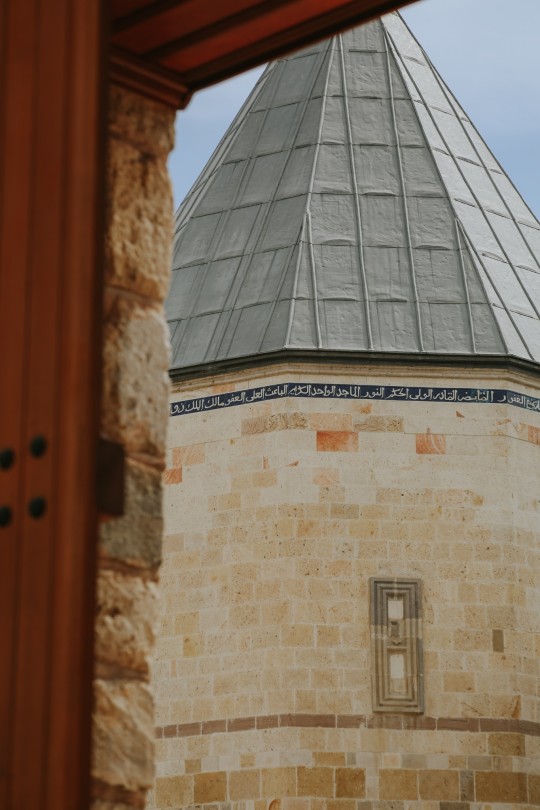
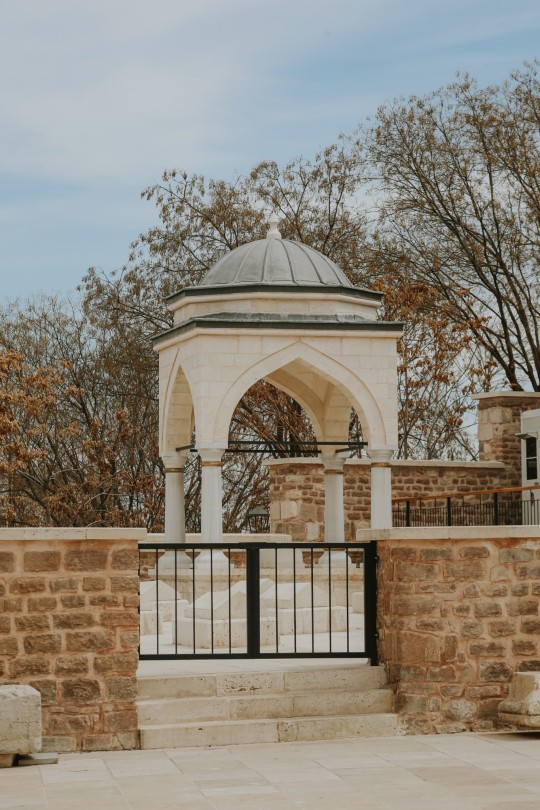

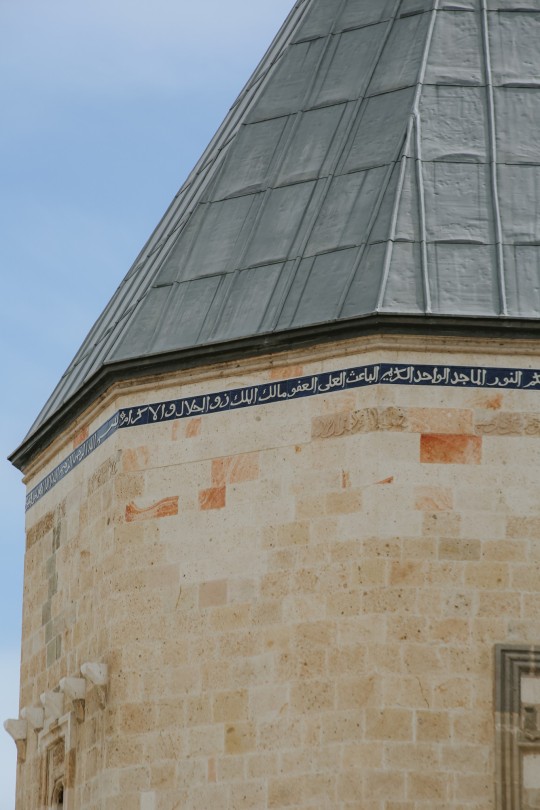
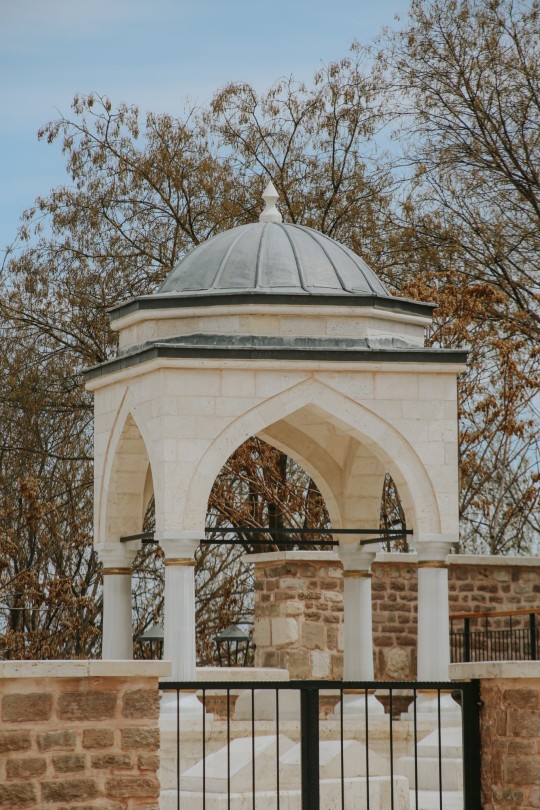

alâeddin tepesi | konya
#cileklipalet#konya#türkiye#turkey#alaeddin tepesi#alaeddin camii#camii#mosque#islamic#islamic architecture#architecture#travel#photography#cameras#canon#lightroom#50mm#300mm
68 notes
·
View notes
Text
Discover The Mystical Charm Of Konya, Türkiye
Konya, Türkiye: Unveiling Its Cultural Gems Nestled in the heart of Türkiye, the enchanting city of Konya beckons travellers with its rich history, captivating traditions, and awe-inspiring architecture. Renowned as the spiritual centre of Türkiye and home to the famous poet and philosopher Rumi, Konya offers a unique blend of ancient wonders and a vibrant cultural heritage. In this article, we…

View On WordPress
#Aladdin Hill#Alaeddin Mosque#cultural heritage#Ince Minaret Medrese#Karatay Medrese#Konya#Konya Archaeological Museum#Konya bazaars#Konya cuisine#Mevlana Museum#rumi#Shams Tabrizi Tomb#spiritual journey#Turkish history#Türkiye#Whirling Dervishes
2 notes
·
View notes
Text
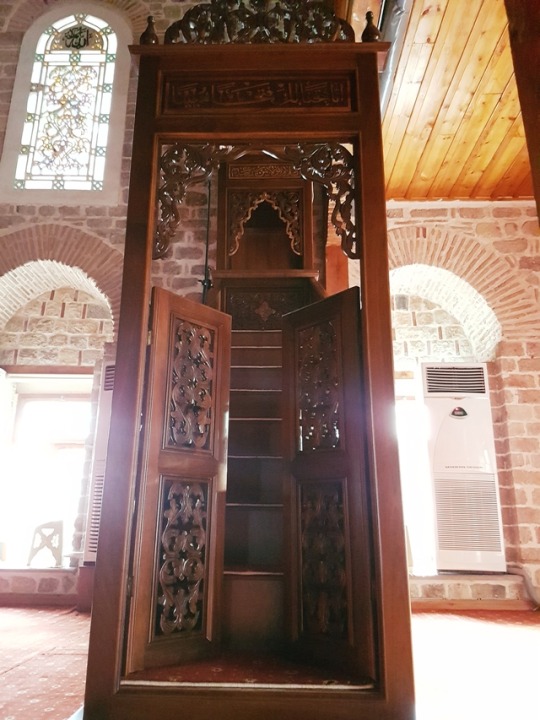
Şüphesiz biz sana apaçık bir fetih verdik.
(Fetih suresi 1. Ayet)
20 notes
·
View notes
Text
Top-Rated Tourist Attractions in Konya
The important place of religious pilgrimage in Konya has a city center filled with museums and monuments of Seljuk splendor. Most tourists stop here just to see the Mevlana Museum and the tomb of the founder of the whirling dervish Mevlana Rumi, who wrote his famous poetry here in the 13th century.
But this central Anatolian city is also full of architectural attractions of mosques and old madrassas (schools of theology) which highlight the artistic talent of the Seljuk sultanate. Anyone interested in the history of Turkey should not miss a visit here. Discover the best places to visit with our list of the best tourist attractions in Konya.
Tile Museum (Karatay Medresesi)
This old madrassa (theological college) was founded in 1251 by the Seljuk emir Celaleddin Karatay. The building was recently restored and is now an impressive museum with Seljuk enamel tiles.
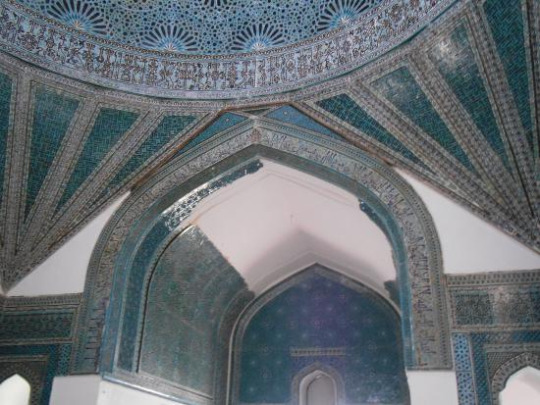
While visiting a tile museum may seem like a rather niche tourist attraction, the sheer beauty of the building makes it one of the best things to do on a Konya sightseeing itinerary. Its interior walls are covered with magnificent examples of Seljuk tiles and there are also ceramic exhibits of excavated finds from nearby archaeological sites. In the room on the left is the tomb of Celaleddin Karatay.
Mevlana Museum
The symbol of Konya is this complex tekke (Sufi lodge) that contains the tomb of the religious leader, philosopher and poet of the thirteenth century Mevlana Celaleddin Rumi, who founded the dervish sect of Sufism. The museum is located in lovingly maintained rose gardens, through which you walk to the ornate Dervisan Kapisi (Dervish Gate).
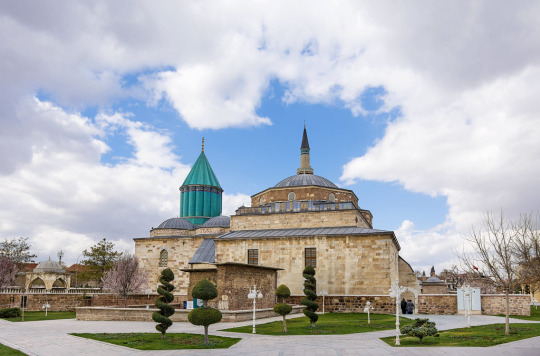
Once inside the complex, you enter the Mausoleum, which is the focus of much devotional worship to this day. Mevlana's tomb is at the other end, flanked by graves of close relatives and followers. The Semahane (hall where dervish ceremonies were held) is on the left and contains a museum of religious exhibitions.
Across the courtyard of the Mausoleum is the kitchen of the lodge, which contains dioramas of dervish life and is connected to Dervish Cells, where the Sufi followers would have lived and now contain exhibits on dervish life.
Koyunoglu Museum
Avid collector Ahmet Izzet Koyunoglu, a member of one of Konya's oldest families, bequeathed his strange and eccentric collection of artifacts, art, ethnography objects, geological items and simple things, to the city of Konya when he died.
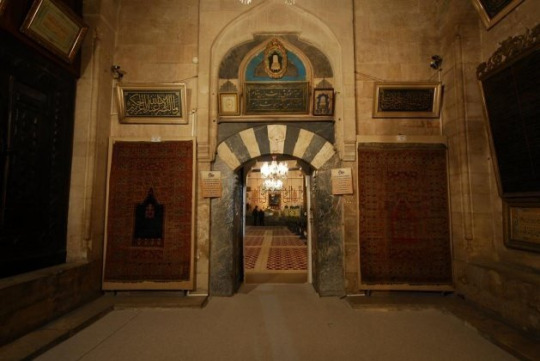
The museum that resulted from this has to be the most peculiar view of the city. The building is a treasure trove of scattered, strange and wonderful exhibits ranging from rare paintings, manuscripts and carpets to stuffed animals and watches. For anyone who appreciates the slightly eccentric, this is a wonderful accompaniment to the city's most traditional attractions.
Museum of Wooden and Stone Carving (Ince Minare Medrese)
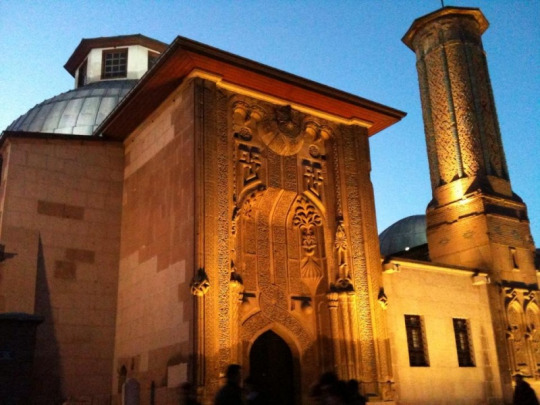
The Ince Minareli Medrese (Seminary of the Slim Minaret) lost the minaret in its name when it was struck by lightning in 1905. The madrassa was built in 1260 for the vizier Seljuk Sahip Ata, and the design presents a richly sculpted decoration on the portal. The building is now a museum, with a large collection of wood and stone sculptures from the Seljuk era that include animal reliefs (despite representations of animals and humans prohibited by Islamic law) from the city's ancient walls.
Archaeological Museum
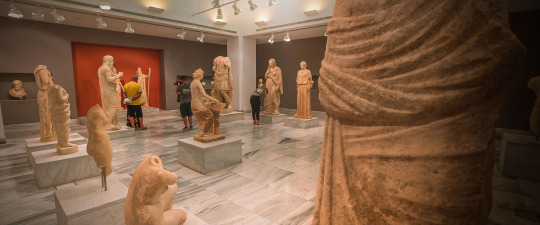
Most of the archeology museums in Turkey have been modernized and modernized in the last decade, but not the Konya museum. This is an old and dusty place with poor lighting and information panels that can also be obsolete. But don't let that put you off, because the collection is excellent (and if you like these relic museums with their treasure-seeking atmosphere, go now before you get your much-needed face wash). There is a complete sample of findings from the nearby archaeological site of Çatalhöyük and a wonderful collection of intricately decorated Roman sarcophagi.
Right at the end of the road is the Konya Museum of Ethnography, which has a complete collection of Turkish crafts, costumes, jewelry, carpets and household items, but unfortunately it looks a bit dusty and loveless.
Alaeddin Tepe
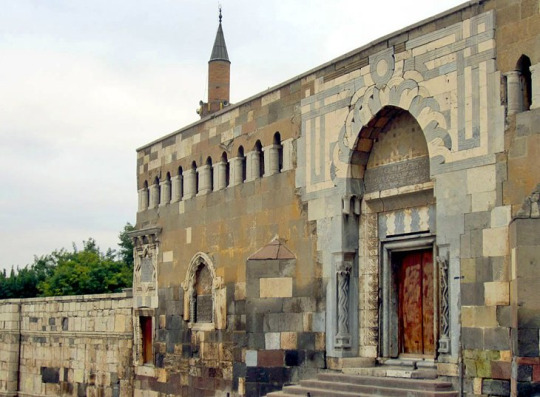
Built on the site of the ancient citadel of Konya, this park, right in the city center, is where the inhabitants of Konya come to walk in the evening and sip tea in the gardens. At the foot of the slope of the hill are the excavation site of the palace of Alaeddin Kaykobad and the remains of the old city wall. At the top of the hill is the Alaeddin Camii, built in the 13th century. It was built as a mosque with columns according to the Arab design, with a wooden ceiling supported by 42 ancient columns.
Selimiye Mosque

Standing on the square opposite the Mevlana museum, this immense dome-shaped mosque, commissioned by Sultan Selim II and built between 1566 and 1574, marked the height of the architecture of the Ottoman mosque. Head to the square in the early evening to take photos of the mosque and the Mevlana museum behind, lit up against the twilight sky. Across the main road from the square are a series of outdoor cafes and restaurants, which are a great place to sit and admire the view of minarets and domes while relaxing with coffee or tea.
Çatalhöyük
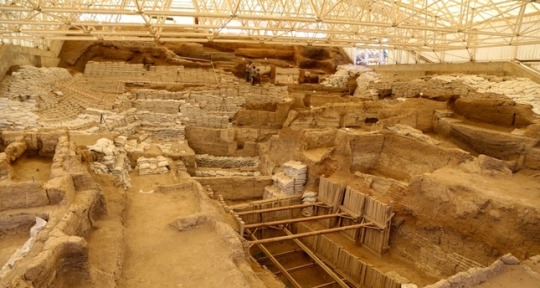
Although there are not huge amounts to see, the Çatalhöyük settlement mound is one of the most important excavation sites in the world. Here, archaeologists have discovered the largest Neolithic site ever found, with a colony dating from around 9,000 years ago. Excavations are in progress, and if you visit in the summer, you can sometimes observe archaeologists working on the site.
A magnificent small museum at the entrance explains the history of the excavations and the importance of the site. From there, a path leads you to the twin excavation areas (protected under domed shelters), where you can see the deep levels, with clear construction outlines, which have been discovered so far.
Sille
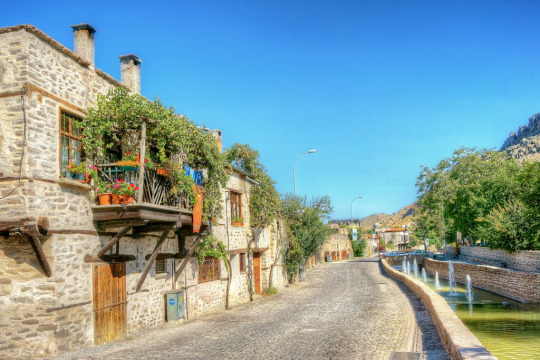
Nice as a button, the ancient Greek settlement of Sille is a small town on the outskirts of the city and a favorite destination for the locals of Konya. Here are two Byzantine churches: Saint Helena and Küçük Kilise, both recently restored.
The church of Santa Elena has an interior covered with colorful frescoes, while the small Küçük Kilise, on the hill behind the town, now functions as a museum dedicated to watches and other watches. The town's streets are lined with beautiful wooden beamed houses, while the cliff ridge is marked with old cave dwellings.
Aziziye Mosque
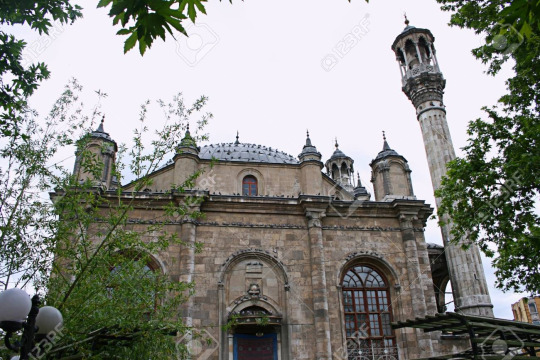
Within the bustling bazaar district of Konya, the Aziziye Mosque is ideal for fans of architecture. It was first built in 1676 by the Ottoman court advisor Mustafa Pasa and rebuilt again in 1867 after a fire. Due to this restoration of the 19th century, the architecture of the mosque is strongly inspired by the Baroque (the most fashionable style at that time), with twin minarets in Rococo style and a brightly painted interior with a rococo prayer niche. This very European decorative style makes an interesting contrast to the traditional design of the mosque.
Sahib-i Ata Külliyesi
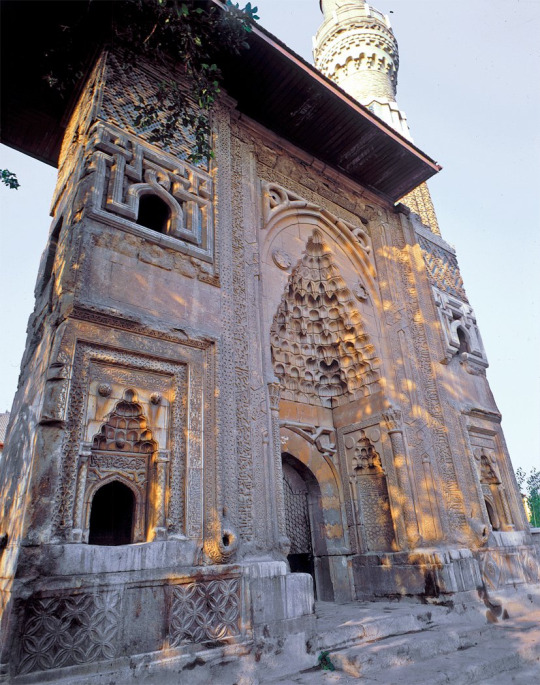
This religious complex comprises a mosque, dervish hut, türbe and baths and was built between 1258 and 1283. The door of the portal, grandly decorated, is beautifully decorated, and the interior of the mosque has a beautiful prayer niche of blue tiles. The dervish hut, with its beautifully restored interior of blue tiles and red bricks, has become a museum with an interesting collection of religious artifacts.
On the way to the mosque you will pass by Sirçali Medresi. Built in 1242, this ancient theological school has some beautiful (but crumbling) examples of tile decoration on its interior walls and an ornate stalactite portal. It houses a collection of Islamic gravestones, as well as some Hittite funeral urns.
Konya Mosques
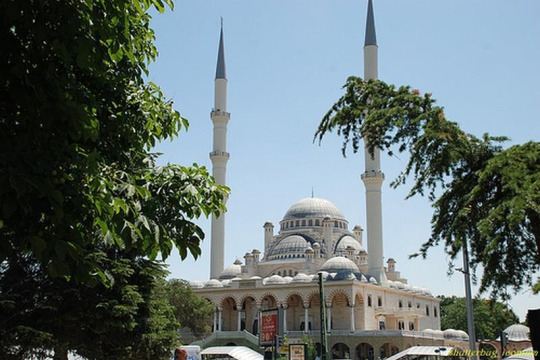
The central city is full of other well-preserved examples of religious architecture. In particular, do not miss the yarn manufacturers' mosque (Iplikçi Camii) on Alaeddin Caddesi. Only the mosque of this religious complex, built in 1201, which was to the east of the ancient citadel of Konya, remains.
The site was initially endowed with a family of manufacturers of threads, hence its name. The square building has two oval and one round domes, and stands on twelve enormous "elephant feet" columns, with a prayer niche richly decorated in marble. Mevlana and her father taught here.
The tower mosque in the bazaar is also worth a hunt. It was built in 1658, but after falling into disrepair was rebuilt in 1811. The roof of the eight-domed mosque is supported by 10 pillars, and a collection of 14th and 15th century clothing can be found in one room inside the building.
Related Articles:
Top Reasons Why Visiting Turkey In Winters Is A Great Idea!
Turkey Travel Guide
9 Things Not To Be Missed in Istanbul
Turkey Tour Packages from Pakistan
25 Most Stunning Landscapes Around The World That Fit Every Travelers List
Turkey Food and Visit Guid
#Konya Mosques#Sahib-i Ata Külliyesi#Aziziye Mosque#Sille#Çatalhöyük#Selimiye Mosque#Alaeddin Tepe#Archaeological Museum#Mevlana Museum
1 note
·
View note
Photo





ÇORUM (04/2016)
Çorum Ulu Camisi (Murad-ı Rabi Camisi)
Çorum, Osmancık Caddesi üzerinde bulunan Ulu Camisi’nin ne zaman yapıldığı konusunda araştırmacılar kesin bir tarih verememektedirler. Bununla beraber Selçuklu Sultanı Alaeddin Keykubat’ın azatlı kölesi Hayrettin Hazır tarafından yaptırıldığı kaynaklardan öğrenilmektedir. Devamı için tıklayınız…
#murad-ı rabi#ulu camii#cami#mosque#çorum#leblebi#şadırvan#osmancık#selçuklu#osmanlı#alaeddin keykubat#islam#muslim#seyahat#turkey#travel#türkiye#seyahatname#travelogue
76 notes
·
View notes
Photo

Family of Bayezid II (quite big lol)
+1 information about the daughter of Mahmud, Ayşe: She surely was still alive between November 1555 and November 1556 since she is listed in Old Palace register with a daily stipend of 70 aspers.
The same 70 apsers daily stipend was given to Sehzade Ahmed’s unnamed daughter. We dont know if this stands for Kamer, Fatma or the unknown daughter.
About his daughters:
Selcuk Sultan 1459-1508 - mother unknown - she married twice: 1/Ferhad Bey in 1484; 2/Mehmed Bey in 1486 - she had five children: 1/ Nesl-i Şah who died in 1564, she married Halil Paşa in 1510; 2/Gaazi Husrev Bey who was governor of Sarajevo, which he developed into a great city, then he was governor of Smederevo (1521), governor of Bosnia (1526-1533), then governor of Belgrade in 1533 and again governor of Bosnia from 1536 to 1541. He died in Sarajevo and was buried there. 3/ Hanzade who married her cousin, a son of Ilaldi Sultan 4/ unnamed princess who married the son of Halil Paşa (her eldest sister’s husband) in 1510; 5/unnamed princess who married twice, the first time to Grand Vizier Yunus Pasha and the second time to Defterdar Mehmed Çelebi (later Grand Vezier and Egypt governor)
Ayşe Sultan 1465 - after 1515 - she may have been sister to Şehzade Ahmed or to Şehzade Korkut. Ahmed was born in 1466 Korkud in 1467 so Ayşe surely was born before them. - she married Güvegi Sinan Pasha in 1480 and had several (at least 6) children but we don’t have information about each one of them: 1/ GevherŞah who married one İbrahim Bey 2/ KamerŞah who married the son of Grand Vizier Mesih Paşa 3/ Fatma who married another son of Grand Vizier Mesih Paşa 4/ Ahmed Bey; 5/ Mustafa Bey; 6/Hanzade Ayşe Mihrihan who later married Dukaginzade Sultanzade Mehmed Paşa and had a daughter Mihri Hatun, who surely was alive between 1555 November and 1556 November. - she built a mosque and a school in Gallipoli and in 1505 she established a foundation
Hatice Sultan 1465 - 1500 - the identity of her mother is unknown - she married to 1/ Müderris Kara Mustafa Pasha around 1479 and had two children with him: Ahmed Çelebi (1480?-1500) and Hanzade; 2/ she married Faik Pasha after 1483 - she built a mosque, school and fountain in Edirnekapi - she was buried in Bursa in the Hatice Sultan Tomb, built by her son
Gevherimülük Sultan 1467 - 1550 - mother unknown - she married to Ahmed Pasha and had 2 children: 1/ Nesli Şahwho died in 1559, she married Dukaginzade Iskender Pasha; 2/ Mehmed Pasha who died in 1557, was governor of Aleppo and Egypt, he married his cousin Ayşe Hanzade Mihrihan, daughter of Ayşe Sultan - she built a school near the Zal Mahmud Pasha Mosque, and she was buried there
Şehzade Hundi Sultan 1465(?) - 1511 - some suggest a birth date of 1470 but it is not correct as she was the daughter of Bülbül Hatun and so Şehzade Ahmed’s sister. Ahmed was born in 1466 so Hundi had to be born before him. - Hersekzade Ahmed Pasha was her husband from 1484 and had children with him: 1/ Mustafa Bey who was governor of Bozok and died in 1533 killed by rebels in his province; 2/ HümaŞah who died after 1551; 3/ Musa Bey
Ilaldi Sultan ? - before 1518 - mother unknown - she had two children with her husband Hain Ahmed Pasha: 1/Aynişah who died after 1531 and married Abdüsselam Çelebi; 2/ unnamed son who married his cousin, the unnamed daughter of Selçuk Sultân - she wrote a congratulation letter to Selim I
Aynişah Sultan 1464(?) - after 1512 - daughter of Şirin Hatun and sister of Şehzade Abdullah (b. 1465) - she married Akkoyunlu Damad Göde Ahmed Bey in 1490 and had children: 1/ Hanzade who married to Yahyapaşazade Gaazi Küçük Bali Paşa; 2/ unnamed princess who married Şehzade Alaeddin, one of Şehzade Ahmed’s sons - she built a school in Istanbul and established a foundation in 1506 - she sent letters of congratulations to Selim I when he became sultan
Hüma/Hümaşah Sultan ? - after 1504 - mother unknown - she married Antalyalı Bali Paşa around 1482 - she was buried in Bursa
Kamer/Kamerşah Sultan ? - ? - she was the daughter of Gülruh Hatun - she was married to Damad Nişanci Kara Davud Pasha, with whom she had a daughter who later married one Mesih Bey. - she was buried in the tomb of her mother in Bursa
Şah/Şehzade Şah Sultan ? - after 1506 - her mother is unknown - she married Nasuh Bey around 1490 and had a daughter - she was involved in charity - she built a mosque in 1506 - she was buried in her sister Hatice’s mausoleum in Bursa
Sofu Fatma Sultan 1466(?) - after 1515 - she was the daughter of Nigar Hatun and sister of Şehzade Korkut and since Korkut was born in 1467 so actually Sofu Fatma should born even before 1464/5/6. - she married Güzelce Hasan Bey around 1504 and had two children with him: 1/ Mehmed Çelebi who later married Ayse Sultan daughter of Şehzade Alemşah; 2/ unnamed daughter who later married Ahmed Bey, son of Ali Bey and Fatma Hanımsultan - about her marriages it is possible she had a first marriage which is not listed by most historians (she would be too old for a first marriage in 1504). She should have a first marriage around the early 1480's. About the identity of the first hubby: Öztuna claims Sofu Fatma's firs husband was İsfendiyâroğlu (Cândâroğlu) Mirza Mehmed Pasha, son of Kyzyl Ahmed Bey. Öztuna gives no marriage date. The problem is, Fatma remarried in 1504 but the pasha was alive until 1530. I don't see why would they divorce, so well I don't know. Öztuna claims they had a son, Mehmed Bey, together who later married Selim I's daughter Gevherhan. Its fine Fatma's son Mehmed did marry Gevherhan okay. But then why would she name her second son also Mehmed? Because she had a son Mehmed from her second marriage who married Ayse Sultan daughter of Şehzade Alemşah. So just why 2 Mehmeds? I dunno this... Maybe one of the names is mistaken? - she was charitable --> left all her possession to the poor when she died - she was buried in the tomb of her half-brother Şehzade Ahmed in Bursa
Sultanzade Sultan ? - ? - daughter of Hüsnüşah Hatun and sister of Şehzade Alemşah
#Bayezid ii#Ayşe hatun#ayşe#ayse#bülbül hatun#bülbül#ferahşad hatun#ferahsad#hüsnüşah hatun#husnusah#ayşe gülbahar hatun#ayse gülbahar#gülbahar#gulbahar#gülruh hatun#gulruh#nigar hatun#nigar#şirin hatun#şirin#sirin#Abdullah#Ayşe sultan#Hatice Sultan#Ahmed#Korkut#Gevherimülük Sultan#gevherimülük#gevheri#hatice
32 notes
·
View notes
Text
Turkish Archaeologists Discover Grave of Sultan Who Defeated Crusaders
https://sciencespies.com/history/turkish-archaeologists-discover-grave-of-sultan-who-defeated-crusaders/
Turkish Archaeologists Discover Grave of Sultan Who Defeated Crusaders

Archaeologists from Dicle University have discovered the graves of Kilij Arslan I, the leader of the Seljuk Sultanate of Rūm who defeated some of the first Crusader armies to arrive in Turkey, and his daughter, in the Anatolian country’s Diyarbakir province.
As Daily Sabah reports, university scholars began searching for the graves through archival research. They then created a commission to oversee fieldwork. After researching graveyards across Diyarbakir’s Silvan district, where they knew the grave must be, the researchers focused their efforts on two gravesites in Orta Çeşme Park. The excavation work involved digging more than six feet underground across a 377-square-foot area. After nine days of work, the team successfully found the burials.
“The area on which we work featured the grave of the most important ruler of the Sultanate of Rum,” says commission member Aytaç Çoşkun. “Therefore, we studiously sustained our work day and night.”
Kilij Arslan I was the second sultan of the Seljuk Sultanate of Rūm. His father, Suleiman ibn Qutulmish, established the independent state in Anatolia by seceding from the Great Seljuk Empire in 1077.
Kilij Arslan became sultan in 1092. Three years later, Pope Urban II set the first wave of Crusaders from Western Europe into the Muslim-controlled Middle East. The People’s Crusade, led by charismatic preacher Peter the Hermit, arrived in Turkey in 1096. The sultan’s forces met the Crusaders in the Battle of Civetot on October 21, killing thousands and ending the Christian campaign.

The sultanate clashed with Western European fighters in the Crusade of 1101.
(mapmaster via Wikimedia Commons under CC-SA 4.0)
“As soon as the Crusaders appeared at the entrance of the valley, they were rained with arrows, falling down their horses one by one before they could figure out what was going around,” wrote scholar Birsel Küçüksipahioğlu in a 2015 journal article. “The Crusaders were perplexed, running here and there. … [I]t was the first time that the Crusaders so closely witnessed the disciplined strategy and tactics of Turks.”
Aided by allies among the Turkish chieftains, Kilij Arslan later clashed with forces involved in the First Crusade and the Crusade of 1101. Per Daily Sabah, he went on to conquer much of eastern Anatolia, which was then ruled by the Danishmendid dynasty, before his death in 1107.
Per Encyclopedia Britannica, the Sultanate of Rūm was home to diverse groups of people, including Christians, Armenians, Greeks, Syrians and Iranian Muslims. Its leaders’ tolerance of different groups supported the sultanate’s stability, and it became a thriving region for commerce, agriculture and art. Eventually, however, the sultanate declined, and in the 1240s, the region came under control of the Mongols.
Craft experts are currently working to restore artifacts from the Alaeddin Mosque in Konya province, which holds the tombs of later leaders of the Sultanate of Rūm, according to the state-run Anadolu Agency. The mosque, constructed during the time of Mesud I, who ruled from 1116 to 1156, houses intricately decorated monuments honoring eight Anatolian Seljuk rulers.
Mehmet Karakoc, rector of Dicle University, tells the Anadolu Agency’s Hasan Namli that the discovery of the tombs is significant for the area’s history.
He says, “This will bring a different perspective to historical events in terms of both Silvan and Diyarbakir history.”
Like this article? SIGN UP for our newsletter
#History
3 notes
·
View notes
Note
Sultan Bayezid II + harem and children
Consorts:
Ayşe Hatun (?? - 1512?): daughter of Alâüddevle Bozkurt Bey of the Dulkadir dynasty and possibly niece of Sitti Mukrime Hatun (consort of Mehmed II). She is usually given as mother of Selim I, but she was not. According to Alderson, she died in 1512.
Bülbül Hatun (?? - 1515): mother of Şehzade Ahmed and Hundi Sultan. She was a very charitable person, building a mosque complex in Ladik, another mosque, school and fountain in Amasya and a school in Bursa. When her son was executed by Selim I, she retired to Bursa where she built a tomb for him. She is buried next to her son.
Ferahşad Hatun (?? - after 1521): Şehzade Mehmed’s mother, she is variously called Ferruhşad or Muhterem. It is possible that her whole name was Muhterem Ferruhşad. Upon the death of her son in 1505, she retired to Bursa like it was customary for the mother of a deceased prince. She established a foundation in Silivri n 1521, so she must have died later.
Hüsnüşah Hatun (?? - after 1511): mother of Şehzade Şehinşah and Sultanzade. She followed her son first to Manisa and then to Konya. After Şehzade Şehinşah died, she settled in Bursa where she eventually died. She had built the Hatuniye Mosque in 1490 in Manisa during her son’s governorship there. She wrote to Selim I on behalf of Mevlana Pir Ahmed Celebi, one of Şehzade Şehinşah’s men who had not received a new post after the prince’s death.
(Ayşe) Gülbahar Hatun (?? - 1505): mother of Selim I, she was a slave concubine and not a highborn princess as tradition maintains. She died in Trabzon during her son’s princely post and she was buried in the Hatuniye Tomb there.
Gülruh Hatun (?? - after 1520): mother of Şehzade Alemşah and Kamer Sultan. During the reign of Bayezid II, she used to correspond with him about their son: “My fortune-favored padishah, heed my cry for help, … rid us of [my son’s] tutor, teacher, and doctor. They are masters of corruption…. Send us good Muslims because our situation has been pitiful since these persons arrived. They have deprived me of my mother’s rights…. If these seven do not go, they will utterly destroy the household of my son, your servant”. Alemşah would die because of heavy drinking, and Gülruh Hatun retired to Bursa. She died in the early days of Süleyman the Magnificent’s reign and was buried in the Gülruh Hatun Tomb in the Muradiye Mosque.
Nigar Hatun (?? - 1503): according to Uluçay and Oztuna, she was the mother of Şehzade Korkut and Fatma Sultan. She followed her son first in Manisa and then in Antalya, where she died and was buried.
Şirin Hatun (?-?): mother of Şehzade Abdullah and Aynışah Sultan according to Uluçay. She is not present in Sicill-i Osmani among Bayezid II’s consorts. It is not known when she died but she was buried with her son and daughter in her son’s tomb. She had built a school in Bursa and a mosque in Trabzon.
Children:
Damad Şehzade Abdullah (1465? - 6.11.1483): eldest son of Bayezid II, he was governor of Trabzon, Manisa and Konya, where he died. He is called Damad as well because he had married his cousin Ferahşâd Sultan, daughter of Mehmed II’s son Şehzade Mustafa. With her she had: a son (1481 - 1489), Aynışah Sultan (1482 - ??) and Şâhnisâ Sultan (1484 - ??). Both princesses reached adulthood as they both got married.
Ayşe Sultan (1465? - after 1515): according to Uluçay she may have been sister to Şehzade Ahmed or to Şehzade Korkut. She married Dâmâd Güveği Sinân Paşa around 1480 and had 6 children with him: Sultanzade Ahmed Bey, Sultanzade Mustafa Bey, Hanzade Ayşe Mihrihan Hanımsultan (who later married Dukagin-zâde Sultanzade Mehmed Paşa), Kamer-Şâh Hanımsultan (who later married Ahmed Bey son of Grand Vizier Mesîh Paşa), Fatma Hanımsultan (who later married Ahmed Bey son of Grand Vizier Mesîh Paşa) and Gevherşah Hanımsultan (who later married İbrahim Bey son of Ömer Bey). Ayşe Sultan built a mosque and a school in Gallipoli and in 1505 she established a foundation. She was buried in Istanbul.
Hatice Sultan (1465? - 1500): the identity of her mother is unknown. She firstly married Dâmâd Müderris Kara Mustafa Paşa around 1479 and had two children with him: Sultanzade Ahmed Çelebî (1480?-1500) and Hânzâde Hanımsultân. She secondly married Dâmâd Fâik Paşa sometime after 1483. Hatice Sultan built a mosque, school and fountain in Edirnekapi in Istanbul. She was buried in Bursa in the Hatice Sultan Tomb, built by her son.
Şehzade Ahmed (1466? - 24.4.1513): Selim I’s biggest opponent during the fight for the throne, he was Bayezid II’s favourite son and the one he wanted to be succeeded by. His only known consort was called Bülbül like his mother. Ahmed had several children: Şehzade Murad (1495 - 1519), Şehzade Alaeddin (1496? - 1513), Şehzade Süleyman (1497? - 1513), Şehzade Osman (1498? - 1513), Şehzade Ali (1499? - 1513), Şehzade Mehmed (1500? - 1513), Şehzade Kasim (1501 - 1518), Kamer Sultan (later wife of Dâmâd Mehmed Çelebî), Fatma Sultan (later wife of Dâmâd Mehmed Bey), and an unnamed princess (later wife of Dâmâd Silahdar Süleyman Bey)
Şehzade Korkut (1467 - 10.3.1513): another of Selim I’s opponents, he thought that he could quietly take the throne while Selim was busy with their brother Ahmed. He paid the janissaries for their support but when Selim arrived in Istanbul, they switched to his side. Governor of Amasya and then Manisa, he was allowed to return there after Bayezid II’s death but eventually Selim I had him executed. He had four children: two sons who died in infancy and Fatma Sultan (later wife of Dâmâd ‘Alî Bey) and Ferahşad Sultan (later wife of Dâmâd Malkoçoğlu ‘Alî Bey and Dâmâd Mehmed Balı Efendi)
Gevherimülûk Sultan (1467? - 1550): the identity of her mother is unknown. She married Dukaginzâde Dâmâd Ahmed Paşa and had two children with him: Nesl-i Şâh Hanımsultan (who married İskender Paşa) and Sultân-zâde Mehmed Paşa (who married his cousin Hanzade Ayşe Mihrihan Hanımsultan daughter of Ayşe Sultan). Gevherimülûk Sultan built a school near the Zal Mahmud Paşa Mosque, and she was buried there when she died.
Selçuk or Selçukşah Sultan (1469 - 1508): the identity of her mother is unknown. She firstly married Dâmâd Ferhâd Bey around 1484 and had two children with him: Nesl-i Şâh Hanımsultan (1486?-1550?) and Sultânzâde Gaazî Husrev Bey/Paşa (1484?-18.6.1541). She secondly married Dâmâd Mehmed Bey in 1486 and had three daughters with him: Hân-zâde Hanımsultan (who married her cousin, son of İlaldı Sultan), an unnamed daughter who married a son of Halil Paşa, and another unnamed daughter who later married Grand Vizier Yûnus Paşa. Selçuk Sultan died in 1508 and was buried in the Selçuk Sultan Mausoleum inside the Bayezid II Mosque in Istanbul.
Hundi Sultan (around 1470 - 1511): daughter of Bülbül Hatun and Şehzade Ahmed’s sister. She married Hersekzade Ahmed Paşa in 1484 and with him had: Sultânzâde Mûsâ Bey; Sultânzâde Mustafa Bey (governor of Bozok in 1533); Kamer-Şâh Hanım-Sultân; Hümâ-Şâh Hanım-Sultân (died after 1551)
Selim I (1470/1471 - 21 September 1520): 9th sultan of the Ottoman Empire.
Şehzade Şehinşah (1474 - 1511): governor of Manisa and then Konya, he died at 37 years old and was buried in Bursa in the Muradiye Mosque near the Şehzâde Mustafa Tomb. His only known consort was Mükrime Hatun, mother of his son Şehzade Mehmed-Şah, who later married his own cousin Şahnisa Sultan, daughter of Şehzade Abdullah.
Şehzade Mahmud (1475 - 1507?): governor of Kastamonu and later of Manisa, where he died at 32 years old. He had three sons and two daughters: Şehzade Orhan, Şehzade Musa, Şehzade Emir-Süleyman (all executed on Selim I’s orders in 1512), Ayşe Hundi Sultan (later wife of Damad Ferruh Bey), Hançerli Fatma Sultan (later wife of Damad Mehmed Bey)
Şehzade Mehmed (1476? - 12.1504): governor of Kefe, where he died. He was married to a princess of the Giray Dynasty, and had two children: Fatma Sultan (1500? - 1556) and Şehzade Mehmed (1505 - 1515, postumous)
Şehzade Alemşah (1477 - 1502): governor of Menteşe and then Manisa, where he died. He had a son and two daughters: Şehzade Osmanşah (1492 - 1512), Ayşe Sultan (later wife of Sultanzade Dâmâd Mehmed Çelebî, son of Bayezid II’s daughter Fatma Sultan) and Fatma Sultan (?? - after 1520)
Aynışah Sultan (?? - after 1512): daughter of Şirin Hatun and sister of Şehzade Abdullah, she married Akkoyunlu Damad Göde Ahmed Bey in 1490. She had two daughters with him: Hanzade Hanımsultan (who later married Sultanzade Yahyapaşazade Balı Paşa) and an unnamed daughter who married her cousin Şehzade Alaeddin, son of Şehzade Ahmed. Aynışah Sultan built a school in Istanbul and established a foundation in 1506. She was one of the princesses who sent letters of congratulations to Selim I when he became sultan. She died after 1512 and was buried next to her mother and brother in Bursa.
Hüma/Hümaşah Sultan (?? - after 1504): the identity of her mother is unknown. She married Dâmâd Antalyalı Balı Paşa around 1482, but seemed not to have had any children. She was buried in Bursa near the Muradiye Tomb.
İlaldı Sultan (?? - before 1518): the identity of her mother is unknown. She married Dâmâd Ahmed Ağa (later Hâin Ahmed Paşa), governor of Rumelia and later governor or Egypt and Second Vizier. With his she had two children: Şâh-zâde Ayn-i Şâh Hanımsultan (who later married Abdüsselâm Çelebî) and a son (who later married a daughter of Selçuk Sultan). İlaldı Sultan wrote a letter of congratulations to Selim I on his accession. It is not known when she died and where she was buried.
Kamer or Kamerşah Sultan (?? - ??): daughter of Gülruh Hatun, she was married to Damad Nişancı Kara Davud Paşa. She had a daughter who later married one Mesih Bey. She was buried in the tomb of her mother in Bursa.
Şah or Şehzade Şah Sultan (?? - after 1506): the identity of her mother is unknown. She married Dâmâd Nasûh Bey around 1490 and had a daughter with him. Both husband and wife were very involved in charity deeds, and Şah Sultan even built a mosque in 1506. When she died she was buried in her sister Hatice’s mausoleum in Bursa.
Şah-zade Sultan (?? - 1520): according to Oztuna, she was a different princess from Şah. She married Malkoçoğlu Dâmâd Yahyâ Pasha in 1501/1502 and had three sons with him: Sultanzade Yahyapaşazade Gaazî Küçük Balı Paşa (?? - 1543), who married his cousin Hanzade Hanımsultan (daughter of Aynışah Sultan); Sultanzade Gaazî Koca Mehmed Paşa (?? - 2.1548), and Sultanzade Gaazî Ahmed Bey (?? - after 1543)
Sofu Fatma Sultan (?? - after 1515): daughter of Nigâr Hatun and sister of Şehzade Korkut. She married Dâmâd Güzelce Hasan Bey around 1504 and had two children with him: Sultanzade Dâmâd Mehmed Çelebi (who later married Ayse Sultan daughter of Şehzade Alemşah) and an unnamed daughter, who later married Ahmed Bey, son of Ali Bey and Fatma Hanımsultan (daughter of her sister Ayse). She was a very charitable person and left all her possession to the poor when she died. She was buried in the tomb of her half-brother Şehzade Ahmed in Bursa.
Sultanzade Sultan (?? - ??): daughter of Hüsnüşah Hatun and sister of Şehzade Alemşah, nothing else is known about her.
#anon#ask post#ask: ottoman history#*consortsandchildren#bayezid ii#ayse hatun#bulbul hatun#ferahsad hatun#husnusah hatun#ayse gulbahar hatun#gulruh hatun#nigar hatun#sirin hatun#ayse sultan daughter of bayezid ii#hatice sultan daughter of bayezid ii#gevherimuluk sultan daughter of bayezid ii#selcuk sultan daughter of bayezid ii#hundi sultan daughter of bayezid ii#selim i#aynisah sultan daughter of bayezid ii#huma sultan daughter of bayezid ii#ilaldi sultan daughter of bayezid ii#kamer sultan daughter of bayezid ii#sah sultan daughter of bayezid ii#sahzade sultan daughter of bayezid ii#sofu fatma sultan daughter of bayezid ii#sultanzade sultan daughter of bayezid ii
61 notes
·
View notes
Text
Best 10 Places to Visit
Istanbul
Nearly all Turkey itineraries begin in Istanbul. It’s this city that straddles two continents at once. The Bosphorus Strait acts like a continental border, splitting the city into two halves Napa wineries European and Asian. This city is the center of the country’s film and television industry, which is why many telenovelas, including Kuzey Guney, are not only shot but also set here. When here, make sure you visit the Ottoman Topkapi Palace, the beautiful Hagia Sophia with its intricate mosaics, and the underground Basilica Cistern. Shop until you drop at the Grand Bazaar, take a cruise down the Bosphorus, say a prayer at the Blue Mosque and soak in the cityscape from the Galata tower.
Ankara
Turkey’s capital and second-largest city, Ankara, is a quieter version of Istanbul. Buğra Gülsoy, who plays Guney in Kuzey Guney, was born here. He is among many celebrities who call this city home.The city has all the fine-tuning that come with being a diplomatic seat of power; however, it never bores its visitors. Here, you can visit the Anıtkabir, which is the mausoleum of Mustafa Kemal Ataturk, the founder of Turkey. It is no wonder why this structure dominates the city’s skyline. For panoramic views of the city, head to the Ankara Citadel located in the Ulus Bentderesi District of the Old Quarter. While you are here, go for a walk on the cobblestone alleys of the quarter and take in the quaint Ottoman houses. At the other end of the spectrum is Kizilay Square, filled with buzzing cafes and restaurants.
Bodrum
The star of the Turkish Riviera, Bodrum, is a world-famous getaway for beach lovers. The city sits by the Aegean Sea and offers a fun Mediterranean vibe to visitors. Its enviable location makes many tourists throng the numerous cafes, restaurants, and luxury hotels that line its azure coastline every summer. Kıvanç Tatlıtuğ, who plays the role of Kuzey in Turkey’s most popular show, holidays here often! You could visit Bodrum Castle, the Museum of Underwater Archaeology, the ancient Bodrum Theatre, and Myndos Gate or simply recline on the beach and hope to run into him!
Kas, Antalya
Kas is a quiet seaside town set away from the bustling crowds. It is located in the Antalya region on the Mediterranean coastline of Turkey. If you prefer an itinerary that’s void of a to-do list, this should be your to-go place! This is the best spot to explore the underwater world first-hand with several diving schools that will first train and then take you on guided deep-sea diving tours. You may take a break from that at one of the seaside cafes or explore the colorful streets of the old market! Kas also offers a dose of history in the form of ancient sites like Antiphellos Theatre.
Trabzon
Trabzon offers two-in-one fun: it’s located by the Black Sea in north-eastern Turkey and has the Pontic Mountains pass through it; this creates a hill station-like ambiance. The region offers a different take on Turkey, one that’s sprinkled with bouts of silence. Explore the Sumela Monastery, a Greek Orthodox Ministry built in the year 346 AD. Spend a night near the Uzun Göl or Long Lake, enjoy a sunset over the Black Sea at Boztepe, and pay respects to the nation’s founding father at the Trabzon Ataturk Kosku museum. Trabzon also has its own Hagia Sophia that’s a little different from the one in Istanbul!
Cappadocia
You will know you’re in Cappadocia when you look up and see colorful hot air balloons floating in the sky. Of course, the best view from one of these balloons is that of the UNESCO World Heritage Site-listed Goreme Open Air Museum, which is home to rock-cut churches that once sheltered Byzantine monks. Equally fascinating are the region’s 36 underground cities—; the most prominent one being the Kaymakli Underground City. Once you’re done touring the sights in Istanbul and Ankara, there are direct flights that connect you to this city in the central Anatolian region of Turkey. You can visit the various pottery shops, the Pasabag, and Devrent Valley, and even check into a cave hotel!
Ephesus
If you are a lover of history then Ephesus must make an entry in your Turkey travel map. It is located about one hour away from Izmir, a city in which many of Turkey’s most popular shows have been set. Ephesus was once an ancient Greek city and today its ruins are very interesting to visit. The entire area is now a UNESCO World Heritage Site, and its must-visit places include the remains of the Temple of Artemis, the Temple of Hadrian, the Basilica of St. John and the Ephesus Museum where you will be captivated by the Artemis statute and the Gladiator Room. The Isa Bey Mosque is an important religious center as is the Meryemana.
Konya
Konya is a romantic city—the kind that would lure dreamers and poets. It’s no wonder why the famous Sufi poet and whirling dervish, Mevlana Rumi, penned his famous, heart-touching verses here in the 13th century. Without a doubt, your first stop should be at the Mevlana Museum that’s adorned with gorgeous roses and contains the tomb of the renowned poet. Its Semahane contains a museum exhibiting religious items from the era. Head to the Alaeddin Tepe park for an evening stroll and cup of Turkish tea. The other fine arts in Konya are represented by the Tile Museum and Museum of Wooden and Stone Carving, ensuring that all lovers of art have a gala time here!
Pamukkale
Pamukkale literally translates to “cotton castle.” One look at its whitewashed terrain and you will know why! The natural site in southwestern Turkey abounds with hot springs rich in the mineral travertine and has been drawing visitors since the 2ndcentury B.C.! Declared a UNESCO World Heritage Site, Pamukkale combines mineral forests, waterfalls, and terraced basins into an open-air spa in a surreal landscape. Take a dip in the calcium-rich travertines, trek up Pamukkale Castle, and learn about Cicero in the Roman ruins of Laodikeia. You may also explore the Hierapolis City Ruins that, along with the springs, make up this UNESCO site.
Bursa
Bursa is so verdant that it was nicknamed "Yeşil Bursa" (Green Bursa) because of the number of parks and gorgeous mountain within and around it. It once served as the capital of the Ottoman state, and its importance as an industrial center continues to this day. In the winters, it is a major attraction for skiers because of the ski resort of Mount Uludağ that overlooks it. In the summers, the mountain provides respite from the heat and wonderful mountain vistas. Take the teleferik to go up to the top. Cumalıkızık, with its quaint cobblestone streets, is a preserved Ottoman village just outside the city center that offers a peek into the traditional Turkish way of life, head here for its huge village breakfast spreads. Buy souvenirs like ebru painting, lithography, ceramics and tiles, calligraphy, metal art, and Ottoman-period antiques at the Kayhan Bazaar. Also, don’t miss the natural thermal spas and hammams!
1 note
·
View note
Photo
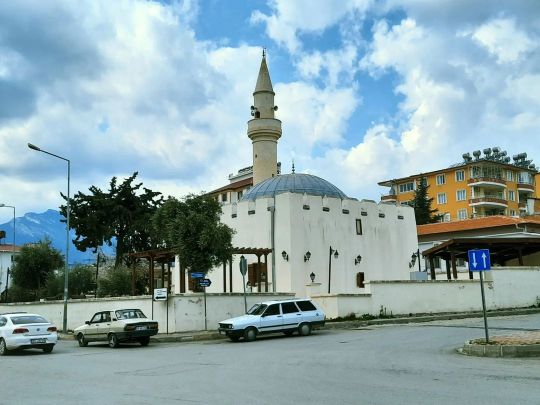
#sultan alaeddin #cami #akcami #anamur #mersin #mosque #samsungm31s #2022 Karamanoğulları Dönemi'nde 1261 yılında yapılan cami, daha sonra yapılan 15-20 metre uzunluğundaki yivli minaresi ile ilgi çekicidir. Karşısında Karamanoğulları'ndan kalma bir han ve bir köprü bulunmaktadır. Akarca Mahallesi'nde merkezi planlı tamamen kesme taştan kubbeli bir camidir. Camiye batı yönünde basık kemerli taş kapıdan girilir. Girişin tam karşısında fazla derinliği olmayan taş mihrap sağda orijinal olmayan ahşap minber yer alır. Yapıda köşelerde ve yan duvarlar üzerinde sağır sivri kemerli açıklıklarda duvar içine gömülmüş yuvarlak iç dolgu ile geleneksel Türk mimarisinde pek görülmeyen tarzda kubbeye geçiş sağlanmıştır. Sağır kemerlerin ayakları üçgenimsi payandalarla desteklenmiştir. Girişin solunda zamanında ahşap olan güdük minaresinin yerinde yivli tek şerefeli minaresi kaide üzerinde yükselir. Kaynak: Mersin İl Kültür ve Turizm Müdürlüğü arşivi (Akcamii Civarı) https://www.instagram.com/p/CbPldusMQeV/?utm_medium=tumblr
0 notes
Text

güzelliğin zulme çaldığı sınır.
#cileklipalet#ömer lütfi mete#konya#türkiye#turkey#alaeddin camii#camii#mosque#islamic#islamic architecture#architecture#travel#türk bayrağı#turkish flag#photography#cameras#canon#lightroom#50mm#300mm
79 notes
·
View notes
Text
Antalya Airport transfers and Antalya side transfers in Turkey
In Turkey , Antalya Airport transfers is one of the premium busy locality for tourists . Antalya is developing at a dizzying pace, with shopg ping malls, glitzy hotels and beach clubs populating the coast east and west of the city. You can search on the map to select a specific location in Antalya city centre.
Antalya airport transfers forms the main part of Turkeys tourist revenues . Antalya Side transfers is another popular transfers in Turkey.
The historic port is located in Antalya, and the narrow streets that stretch from it to the old town are surrounded by historic wooden houses. The elegant flute minaret of Yivli Minareli mosque in the centre of the city, built in the 13th century by Seljuk Sultan Alaeddin Keykubad, has become the symbol of Antalya. Emperor Hadrian visited the city in 130 AD and decorated the three arched gates built into the city walls in his honour.
The port from which Antalya emerged squeezes between the crenellated walls of the old town and the hectic, tree-lined waterfront into the rugged recesses of the coast and is the starting point for boat trips to see the Eudes waterfall. A historic tram donated by the city of Nuremberg connects the western beach of Konyaalti with the Antalya Museum in the eastern part of the city centre. The 1999 tram starts from the museum to Sheraton Voyager and Falez hotels along city's main streets, from Kalekapisi to Hadrians Gate and Karaalioglu Park, ending in Talya Oteli.
The distance of Antalya Side transfers is 66 kms and it is also easily affordable just like the latter .
Antalya Airport is an international airport located in Antalyas, 13 km from the city center, in southwestern Turkey. The city was founded in the 2nd century BC as a seaport by Attalus II. Philadelphus, King of Pergamum. Attalia), a city and port on the Mediterranean Sea, is located in southwest Turkey.
The most important urban green areas include the City Forest of Antalya, Ataturk Park and Kemer City Forest. Kemer, situated in the west of Antalya city, 30 km away, is famous for its natural environment where green mountains and turquoise Mediterranean meet with breathtaking views in the heart.
Many of the beautiful statues in the Museum of Antalya that house some of the most beautiful archaeological finds come from Perge, a prominent city from the 2nd and 3rd centuries BC, about 17 km east of the city. One of the most famous inhabitants was Apollonius, whose town of Perge was 15 kilometres south of the present city, an astronomer and geometer of the second century BC who defined the geometric terms parabola, hyperbola and ellipsis.
Antalya is surrounded by dozens of ancient cities and throughout the province there are incredible archaeological sites, most of which can be found in the Antalya Archaeological Museum. The tourist area is located in the region of Kebiz in northern Antalya, about 7 km from the city center. The most famous formal attraction of the city is the Museum of Antalysa, which houses some of the best archaeological finds in Turkey.
0 notes
Text
Lupine Publishers | The works of Prince Qusun the Royal Waterer of Nazareth Architectural and Artistic City of Cairo
Lupine Publishers | Journal of Anthropological and Archaeological Sciences
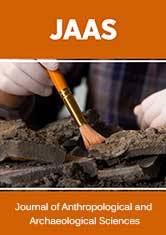
Editorial
Prince Qusun, one of the most important Mamluks of Sultan al-Nasir Muhammad ibn Qalawun, had come to Egypt as part of a delegation from Barakad in Bukhara «the land of the Mongol Khan between India, China and Russia» accompanied by Khond Khond, the sister of Uzbeq Khan, who was married to al-Nasir Muhammad ibn Qalawun in 1320 AD. With him goods from his country worth 500 dirhams and went around the markets of Cairo to sell his goods, has been seen by King Sultan Nasser asked him Vdlh one of the custody of the Royal Stable, and admired the Sultan Nasser bought it was beautiful, and the Sultan loved him and annexed to the Mamluks and over the days made him a leader of a hundred The soldiers reached the highest rank in the Royal Palace was At the age of eighteen years, he brought his brothers and relatives, from the land of Bukhari, then the Sultan’s wife, his daughter, and married his sister, and with the expiry of the Nasser, made him guardian of his children, in the year 1327.
When King Nasser felt that in the latter tendency, he asked Qusun to be the guardian of the throne and supervisor of his son, who chose him to the king after him, and Sultan Al-Nasser died in 741 Hijra, reassured that Qusun will return him beautiful, but Prince Qusun had a different opinion on Mansour Saif al-Din After three months after the death of his father, Abu Bakr sent him to prison and brought his younger brother and called him a successor to Mansour Saifuddin was named Ashraf Alaeddin Kajk, and the Egyptians His Highness Alaeddin small, and Qusun began to rule the country with all force and oppression, and the Mamluk princes revolted and arrested him in 1342 AD The rule of Sultan Ahmed bin Nasser conspired by senior princes envy and capture Les prison where he died in Alexandria.
It has the remaining architecture in Cairo, the mosque, the agency, the palace, the dome and the minaret.
Collector
The Qusun Mosque (known as Qaysun) is located on Muhammad Ali Street near the new Helmiyya area, specifically at the court of the court near Mughrabilin.It was built by the great Emir Saif al-Din Qusun al-Saqi al-Nasiri in 730 AH-1330 AD, and was opened for prayer by Sultan al-Nasir Muhammad ibn Qalawun.
It was next to the mosque lane Almsamda of its western part is a large house known as “Prince Agus Namila” and then known as “Prince Jamal al-Din fighting seven Mosul” Prince Qusun took and demolished and took over the construction of this mosque on 21 Ramadan 730 AH.
The mosque was renovated, and its courtyard was rebuilt in 1893 during the reign of Khedive Abbas Hilmi II, and the present courtyard is covered with a wooden dome. Ali Mubarak said in the plans that a large part of Qusun Mosque was taken at the opening of Mohammed Ali Street, including the waterwheel and the minaret. Ali Mubarak laid down the plan to renovate the mosque and rebuild what was destroyed when he was minister of endowments, and the renovation was not completed until 1893.
The remains of the minaret disappeared with the expansion of Muhammad Ali Street in 1873, where the Ministry of Awqaf reconstructed its building in 1893 under the supervision of Ali Pasha Mubarak, as well as the remains of the mosque artifacts that used to illuminate the mosque, the Islamic Museum retains a brass openwork, composed of polygonal shape It has 12 ribs and four layers of rows of candles. The remains of the original mosque Qusun only the northern door and many stucco windows, decorations and writings that record the date of construction of the mosque and the name of the originator, and on the left shoulder the door sundial on the name of its maker Ahmed Hariri and the date of manufacture (1383).
On the northern door overlooking the Saroujia Street, which is built with stone and followed by colored marble, it reads:
“Order to establish this blessed mosque with the generosity of the Almighty slave to God Almighty Qusun of the Royal Nazareth Waterer in the days of Mawlana Sultan, King Nasser, dearest supporters in the year thirty and seven hundred”
This phrase was written on the door.
The palace
This palace is located near Salah al-Din Square, in Manakh Waqf Street, off Sultan Hassan Street in the Caliph district, constructed by Prince Saif al-Din Qusun in 1238 AD and renovated by Prince Yashbak bin Mahdi in 1475 during the days of Sultan al- Ashraf Qaytbay in the Mamluk era. The name of Sultan al-Nasir Muhammad ibn Qala’un and the name of the prince is intertwined at the entrance to the main door, and most of the remaining parts of his era are now intertwined. A member of the government of Sultan al-Ashraf Qaytbay, he was known to Nation Bhouc «Brdq» distortion for «Ocyprda».
It is known historically that the basis of the Palace of Qusun «Stable», and has two doors, a door from the street next to the cow, and the other door towards the door of the chain that leads to the Royal Stable and the castle of the mountain, was established by Prince Alamuddin Singer Jamakdar, and took him from Prince Seif Eddin Qusun and spent him Its price is from the house of money.
Historical sources mention that the palace was characterized by exquisite decorations, roofs decorated with gold water, marble fountain in the middle, and marble floor, which testifies to the beauty of Islamic architecture during the Mamluk period, and the door of the main palace, and was located in the northwest facade crowned by a city contract decorated with colored marble, It also has decorations carved on the stone, and includes a founding painting in the name of Sultan al-Nasir Muhammad ibn Qalawun, as well as the name of the makers of the palace, Mohammed bin Ahmed, and Ahmed Zaalash Shami. The basement of the palace is used as stables and warehouses, while a magnificent reception hall is topped by these stores.
Agency
Located in Bab El-Nasr Street in aesthetic. Established by Prince Seif Eddine Qusoun Al-Saki Al-Nasiri in 1341, leaving only the entrance, which is a stone with a closed door opening with a huge wooden shutter free of decorations. This blessed Khan established the high Ashrafiye residence of Qusun, the royal sage of Nazareth, Adam Allah Azza.
The entrance is made of granite and is moved from an Egyptian temple containing Egyptian inscriptions to be the largest movable granite piece containing Egyptian inscriptions in Islamic architecture in Cairo.
The dome and minaret
Al-Maqrizi mentioned it in his plans. It was destroyed, leaving only the dome and the large or central lighthouse west of the shrine of Sheikh Jalal al-Din al-Suyuti outside the door of the Qarafa in the caliph. The dome is one of the most important domes of the Mamluk style domes. Or polygonal cupolas.
Read More Lupine Publishers Anthropological Sciences Journal Articles:
https://journalofanthropologicalsciences.blogspot.com/
0 notes
Link
https://www.packagetourturkey.com/destinations/konya/alaeddin-mosque/
0 notes
Note
How was he like historically? I mean Mehmed ?
Well, since none of us have met Mehmed or have a time machine to be there, there’s really nothing I can say other than offer historical facts. Because we can read all of the biographical information available about him, but we will never truly know him. So anything about his personality, his personal life, his thoughts, and so on? That’s speculating & speculating can be dangerous ground to walk on.
As for historical facts about him, here are a few in bullet point form because if I did it in paragraphs we would be here a while. Also I will be limiting myself to until just a little after he conquered Constantinople. My information is primarily taken from Mehmed the Conqueror and his Time by Franz Babinger. My fellow mods may add in more for what happens after:
- Mehmed was not Murad’s favorite son. Instead, it was Mehmed’s older brother, Alaeddin Ali. But, Alaeddin Ali was murdered when Mehmed was eleven. So at the age of eleven, Mehmed became heir to the throne.- At this point and time, he wasn’t exactly Murad’s source of pride and joy. Mehmed was impulsive, stubborn, refused to obey, & didn’t accept even the smallest admonition. - Mehmed became sultan twice. The first time was after his father abdicated the throne when he was about 12 years old. The second time was when he was about 19 years old. - After he ascended to the throne the final time, he had his younger brother killed. - He immediately began plans to conquer Constantinople soon after ascending to the throne. - He created a new fortress on the Bosporus, ensuring he had control of both the Asian and European sides. He also had cannons built which he ordered to be used to destroy any ships that did not pay the levy. - When a Venetian ship was captured with the help of the newly erected canons, the sailors were captured and beheaded as ordered by Mehmed. He also had the captain impaled.- At the age of 21, Mehmed laid siege to Constantinople and eventually took control of the city. - He had Çandarlı Halil Pasha executed immediately after Constantinople was conquered.- When he first entered the newly conquered city, he went to Hagia Sophia. Upon entering the church, he saw a soldier destroying the marble floor with an ax. When the soldier responded that it was for the faith, Mehmed struck him with a sword. He supposedly said, “Content yourselves with the loot and the prisoners. The buildings belong to me.” He then converted the church into a mosque which was renamed Ayasofya. - He granted members of the Orthodox church three special privileges: their churches would not be transformed into mosques, no one can interfere with their marriages, funerals, and other church rites, and finally, they are free to celebrate Easter with all the trimmings. - According to Jewish contemporaries, under Mehmed, Turkey was “paradise” for them. - After the conquest, Mehmed amassed information about the Western world (it’s geography, rulers, political situations, quarrels, art of wars, & armies) with the help of Italian scholars.
- Veronica
10 notes
·
View notes
Text
Portrait of Osman I / I. Oszmán portréja
Everyone know that Osman was the founder of the House of Osman, he remembered as the first of the Ottoman sultans. No one knows when or where he was born, and for a long time not a single artefact existed that could be confidently dated to his lifetime. There are two coins (which I already mentioned in the previous post about Ertugrul) from his time, and there are some legends, some descriptions about him, but we don't know too much about him still. So we know Osman was a historical person, but who was he?
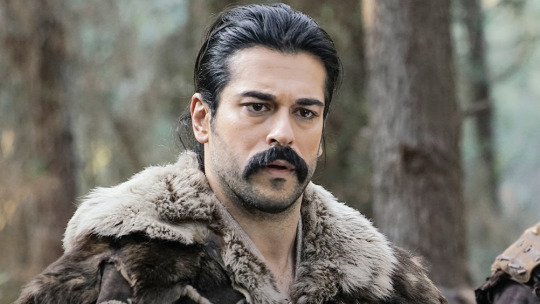
His early life
Legends say he was born around 1260 as the son of Ertugrul Bey and Halime Hatun, and was from the Kayi tribe. It seems he had at least two brothers, Gündüz and Savci, who were both older than him. But there are no evidences for these legends. Yes based on the coins he was the son of Ertugrul so it can be true.
He became the bey of his tribe after the death of his father. Some chroniclers hint that after Ertugrul’s death Osman’s uncle, Dündar became the bey, but Osman didn’t want to accept, so he rebelled. Otheres says Osman ebcame the leader and it was Dündar who didn't accept him. Anyhow most chroniclers agree that Dündar and Osman had a fight and in the end Osman killed Dündar with an arrow. The modern sources stay silent about this, because they find it not too glorious to kill your own uncle for the throne. It's hypocrite in my opinion, since fratricide and civil wars were main part of the Ottoman History. So in my opinion there was nothing wrong with this act (if Osman really did that) in such circumstances. Anyhow he became the leader of his tribe at a relatively young age.
Osman's dream
Osman at first was loyal to the Seljuks, but then he began to act independently around 1299. The reason of this act is not known. But the legends say that the whole idea of the Empire – and so his kind of rebel againsts the Seljuks – began quite literally with a dream:
"One night, the first sultan, Osman, was sleeping in the house of a holy man called Edebali when: „He saw that a moon arose from the holy man’s breast and came to sink in his own breast. A tree then sprouted from his navel and its shade compassed the world. Beneath this shade there were mountains, and streams flowed forth from the foot of each mountain. Some people drank from these running waters, others watered gardens, while yet others caused fountains to flow. When Osman awoke he told the story to the holy man, who said “Osman, my son, congratulations, for God has given the imperial office to you and your descendants and my daughter Malhun shall be your wife”."
So after this dream Osman decided that he will creat his own Empire and will not be a servant of another state. Most probably this is just a legend, because these kind of „dreams” have a history with the Central-Asian origin nomad people. For example in the early Hungarian history there is also a dream like this, called „Emese’s dream”. This one is basically the same and story. Emese was the wife of Chief Ügyek, and she was impregnated by a turul bird. The turul appeared to her in a dream and told her that from her womb a great river would begin, and flow out over strange lands. According to dream interpreters, this meant that she would give birth to a son who would lead his people out of their homeland, and that her descendants would be glorious kings. Emese's son was named Álmos, whose name derives from the Hungarian word "álom", meaning dream, thus "Álmos" can be interpreted as "the Dreamt One". And it happened like that, because Álmos became the founder of House Árpád. Interesting fact is that the name Emese had a türk origin, originates from the Old Turkic eme, ana or ene, which mean mother.
So we clearly can see, that these kind of drem-stories can be found in any Central-Asian origin nation's legends and they aremostly have the same meaning.
Osman's life after his dream
Most probably it didn't happened like, Osman had this dream – or not – and he started to build an Empire... Most probably he never even dreamt of such a huge Empire, what later happened to the Ottomans. Most probably he just wanted to make his own beylik, with his own cities.
His first indisputable evidence comes from a Byzantine chronicler, who tells the story of a battle at Bapheus, quite near Nicomedia (Izmit), in July 1302, in which Osman and a force of nomad archers defeated a Byzantine force accompanied by Alan auxiliaries. It is possible that badweather upstream and a rare flood of the Sakarya river downstream made it attractive to Osman and other türk beys to seek to recoup damage to their herds in the lowlands. At this time Osman was no more powerful than a number of other minor beys.
Within a very short time, türk raiders had reached the Sea of Marmara. A contemporary Byzantine chronicler describes how news of Osman’s victories spread and attracted Türks from other areas of western Anatolia to join his following, and how his force was strong enough to defeat a Byzantine army near Nikomedia (Izmit). From their base in the Sakarya valley, where Osman had occupied the old Byzantine fortified places, his men plundered the countryside to the west, forcing the inhabitants into the walled towns. These remained secure, since Osman obviously lacked the military skills to undertake formal sieges: his assault on Nikaia failed. He did take several other fortresses and fortified towns in the Sakarya valley, using them to store his plunder. In a similar manner he destroyed the countryside around Bursa, but also failed to take that city.
His personal life and family
Osman had at least two wives. One was Edebali's daughter for sure, as his dream also suggest. She was named Rabia Bala, or simply Bala but sometimes called Malhun as well. She was the mother of Alaeddin Bey and maybe had other children also. It seems she may had problems with the nomadic lifestyle or her relationship with Osman went wrong, because she spent the last years of her life with her father. She died in Bilecik in 1324 and was buried next to her father’s tomb.
Osman's other wife was Mal Hatun, who possibly was the daughter of the ruler of the Umuri or Amouri principality. According to a Byzantine historian “a son of Umur fought with Osman in one of his first raids against local Byzantine lords”, which may explain the marriage between Osman and Mal Hatun as a political alliance. Mal Hatun was the mother of Osman’s successor Orhan, and she actually outlived her husband as she was buried in the family tomb around Osman’s grave in Bursa. It is not known when she died.
In the first sentence I said at least two wifes... Well yes "a historical tradition regarding the acquisition of one of Osman’s wives calls to mind the Turkish nomadic practice of acquiring women through raids on neighboring tribes. As the story goes, one day on his way to Eskisehir. Osman caught sight of a woman in the village of ltburnu, fell in love with her, and, without telling his father, sent someone to ask for her in marriage. She refused on the grounds that she was not worthy of him, although this may have been an excuse, since there were rumors that Osman intended only a brief dalliance with her. Osman was spurred to kidnap the woman when an erstwhile ally of his, listening to his description of her manifold virtues, decided to take her for himself. Although the sources confuse this woman with Mal Khatun and Edebali’s daughter, she was clearly a person of lesser status. The details of the story indicate that the kidnapping occurred when Osman was quite young and before he had gained more than a local reputation. Women of standing themselves, selves, Edebali’s daughter and Mal Khatun probably married a more mature and powerful Osman."
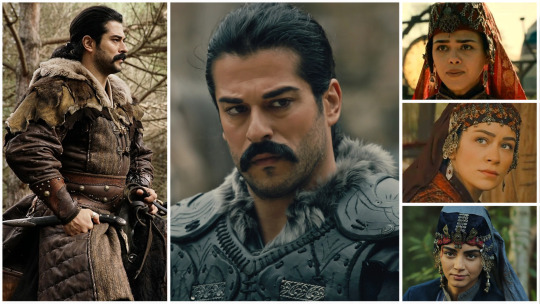
Osman had at least eight sons and one daughter.
Osman's eldest son - whose name is unfortunatelly unknown - was given to the Selcuk Sultan Gıyasuddin III Keyhusrev to be raised in his household when Ertugrul stipulated a peace treaty with him. He had descendants who were alive at the time in which Bayezid I conquered Malatya. The fact that this son of Osman was sent to the Seljuk Sultan during Ertugrul’s life, suggest that he maybe was born to the women, who Osman captured.
His second son most probably was Orhan, who was born around 1281 and became the second ruler of the Ottoman dynasty. During Orhan's reign the little principality began to acquire a more settled aspect. Osman’s territory had contained no large towns. But in 1326, however, the city of Bursa succumbed to starvation and became, from this date, the first capital of the Ottomans. In the next year, following an earthquake which damaged its fortifications, Orhan’s men occupied the Byzantine town of Lopadion (Ulubat), towards the Dardanelles. Moreover Orhan was the first one who established an Ottoman bridgehead in Europe. He achieved this by exploiting a civil war in Byzantium between the rival Emperors John [VI] Kantakuzenos and John [V] Palajologos. Kantakuzenos sought allies among the Turkish rulers of western Anatolia and, in 1346 formed a pact with Orhan by marrying him to his daughter Theodora. The strategy was successful and, in 1347, Kantakuzenos entered Constantinople and proclaimed himself Emperor, with the other John as his co-regent. So beside his great victories Orhan was the first to use marriage as a tool to get himself supporters. His successors used to do this until Mehmed II, who changed the tradition and stopped the sultans from marrying noble women.
His third son was Alaeddin Ali Bey, who was born around 1290 and later he was made governor of Bilecik. He had a son Kiliç Bey, and their last descendant died in 1530. Aleaddin also built a mosque complex in Bursa. He didn't lived a long life, sources don't agree, but most probably he died around 1330.
Osman's other children are less knowns. We don't know anything for example about Savci Bey, just that his son married one of the daughters of Orhan
I. Melik Bey is also not known, we only know that he had a daughter.
Çoban Bey was surely Osman's son, because he built a mosque in Bursa, and by his complex it is known who he was.
Osman's other son was Pazarli Bey, who was the commander of his brother Orhan I for years, so maybe he was the closest to Orhan? Pazarli Bey also had a daughter, and two sons.
Osman also had another son, Hamid Bey, but we have zero information about him.
Osman had most probably more than one daughter, but we only have evidence for the existence of one. Fatma was named in the foundation deed of later Orhan I, so we know that se existed, but nothing else.
It seems like we know a lot about Osman, isnt it? But actually, even his name is the subject of some controversy!
A Greek historian gave us the description of the Sakarya flood and is the one contemporary writer to mention Osman ’s name, did not call him Osman at all but rather Ataman. The surprising notion that Osman had another name finds support in two later sources. Ataman is a Turkish name or maybe Mongol, while Osman is impeccably Muslim. This has led to some suspicion that Osman, or Ataman, the Ottoman, might have been born a pagan, that he may have taken his new name Osman later when he became a Muslim. But if this were true, if Osman were indeed a convert to Islam who changed his name, why would his sons have kept their genuinely Turkish names, who were Muslims beyond any doubt? From what the greek historian wrote, about the only thing we can surmise of the Turk he called Ataman is that he was a warrior.
Osman's death and legacy
The date of Osman's death too is uncertain. He probably died by 1324, the date of a trust deed registered by his son Orhan. The Moroccan world traveler Ibn Battuta, who visited the area in 1331 - 32, wrote that Osman was buried in the mosque of Bursa, probably the former Church of Saint Elias. This church is no longer standing, due to an earthquake two hundred years ago. Osman's remains now lie next to those of Orhan, father and son in suitable twin mausoleums erected in 1863. All in all it was Osman who was the founder of the Ottoman Empire, and who was to give his name to the Ottoman – or Osmanlı – dynasty.
Used sorces: Colin Imber - The Ottoman Empire, 1300-1650; Peirce - The imperial harem; Faroqhi - The Ottoman Empire and the World; Fleet - The Cambridge History of Turkey, 1071-1453; Howard - A History of the Ottoman Empire; Öztuna - Devletler ve Hanedanlar Cilt 2; Uluçay - Padişahların Kadınları ve Kızları
* * *
Azt mindenki tudja, hogy Oszmán volt az Oszmán-ház megalapítója, és úgy emlékszünk rá, mint az első oszmán szultánra. Azonban senki sem tudja mikor és hol született, évszázadokig létezésére sem volt bizonyíték. Azóta előkerült például két aranyérme, melyeket ő veretett (és amelyekről már szó esett a korábbi, Ertugrulos posztban); ismert néhány leírás is róla, azonban nem tudunk még mindig túl sokat. Tehát akkor ki is volt Oszmán?

Korai évei
A legendák szerint Ertugrul Bég és Halime Hatun fiaként született 1260 körül a Kayi törzsben. Azonban nincs erre bizonyítékunk. Igen, itt vannak az érmék, melyek arra utalnak, hogy Oszmán apja valóban Ertugrul volt, de semmi mást nem tudunk biztosan.
Apja halála után vált a törzs fejévé. Néhány történetíró szerint Ertugrul halála után annak öccse, Dündar lett a bég, amelyet Oszmán nem fogadott el és fellázadt ellene. Más források szerint épp fordítva történt és Oszmán lett a bég, Dündar pedig fellázadt ellene. Akárhogyan is, abban egyetértenek a történetírók, hogy Oszmán és Dündar harcoltak egymással, melynek végén Oszmán egy nyíllal megölte Dündart. A modern források csendben maradnak ezzel kapcsolatban, hiszen méltatlannak érzik, hogy a dinasztia alapító ilyen véres családi küzdelem árán lett bég. Ez véleményem szerint nagy álszentség, hiszen tudjuk, hogy a testvérgyilkosság és a polgárháborúk milyen komoly részét tették ki a birodalom több évszázados történelmének. Véleményem szerint tehát a körülmények ismeretében semmi rossz nem volt abban sem, ha Oszmán valóban így ragadta magához a hatalmat. Mindenesetre azt tudjuk, hogy Oszmán kifejezetten fiatalon vált a törzsét vezető béggé.
Oszmán álma
Oszmán törzsfőként eleinte hűséges volt a Szeldzsuk Államhoz, azonban idővel, 1299 körültől függetlenül kezdett el cselekedni. Ennek oka ismeretlen. A legendák szerint az egész birodalom alapítási ötlet - és ezzel együtt a Szeldzsuk Birodalom elleni lázadás ötlete - egy álommal kezdődött.
"Egyik este az első szultán, oszmán egy szent ember, Edebali házában aludt, amikor:"Azt látta, hogy a hold a szent ember mellkasából a magasba emelkedik, átlebeg az ő mellkasára, majd belesüllyed. Ezekután testéből egy fa nőtt ki és behálózta a világot. Lombja alatt hegyek voltak, folyók folytak azok lábainál. Néhány ember a folyókból ivott, mások kertjüket locsolták, míg mások szökőkutat alkottak a folyók vizéből." Amikor Oszmán felébredt, elmondta az álmát ennek a szent embernek, aki erre eképpen felelt: " Oszmán, fiam, gratulálok, Isten téged választott, rád és utódaidra bízta a dicső feladatot. Leányom Malhun legyen a feleséged."
Ezután az álom után döntötte el Oszmán, hogy birodalmat alapít, nem pedig más birodalmakat fog szolgálni. Nagy valószínűséggel ez csak egy legenda, hiszen a hasonló álmok kifejezetten gyakranjelennek meg a Belső-Ázsiai eredetű nomád népek hiedelem világában. Például a korai magyar történelemből is ismert egy ilyen álom, Emese álma. Ez alapvetően szinte ugyanaz, mint Oszmáné. Emese Ügyek felesége volt és egy turul madártól esett teherbe, aki álmában meglátogatta és azt mondta neki, hogy méhéből hatalmas folyó fog áradni, mely új vidékekre is eljut. Az álomfejtől szerint ez arra utal, hogy ő fogja világrahozni azt, aki elvezeti új hazájába népüket és, hogy utódaik dicső uralkodókká fognak válni. Emese később világrahozta fiát, aki az Álmos nevet kapta, utalva Emese álmára. Külön érdekessé teszi Oszmán szempontjából a történetet az, hogy maga az Emese név is türk eredetű, amely az ősi török eme/ana/ene szóból ered, mely anyát jelent.
Egyértelmű tehát, hogy ezek az álom-történetek megtalálhatóak a legtöbb Belső-Ázsiai nép legendái között, és szinte minden esetben alapvetően hasonlóak, hasonló jelentéssel bírnak.
Oszmán élete az álma után
Nyilvánvalóan az álom után nem az történt, hogy Oszmán hirtelen birodalmat akart építeni (már ha álmodott egyáltalán)... Valószínűleg még csak álmodni sem mert arról, ami valójában történt leszármazottjaival, hogy ilyen hatalmas birodalmat hoztak létre.Valószínűleg ő csak egy kis bégséget akart magának, néhány városkával.
Első kétségtelen bizonyíték Oszmán uralkodásáról egy bizánci történetírótól származik, aki leírta Bapheus-i csatát, mely Nicomedia (Izmit) közelében történt 1302 júliusában. Eszerint Oszmán és nomádokból álló íjászai legyőztek egy csapat bizánci katonát. Lehetséges, hogy az időjárási körülmények nagyban felbátorították Oszmánt. Ekkoriban ugyanis hatalmas áradás zajlott a Sakarya folyó mentén, amely miatt Oszmán és csapatai szükségét érezték a terjeszkedésnek, hogy legyen hol legeltetni és hová menekíteni állataikat. Ekkoriban azonban Oszmán nem volt több, mint egyike a sok kicsi törzs vezetőinek.
Rövid időn belül azonban győzelmének híre elért a többi türk táborba is, elkezdték őt csodálni és egyre több türk tábor csatlakozott hozzá Nyugat-Anatóliából is. Így a türkök már a Marmara tengerhe is elértek nemsokára. A Sakarya völgyben táboroztak, és innen indultak újra meg újra lerohanni a környező területeket. Valóban sikerült ezzel területet, legelőket szerezniük, azonban egyetlen fallal körülvett várost vagy erődítményt sem sikerült bevenniük. Oszmán megpróbálta Nikaia-t is bevenni, ám nem járt sikerrel, mint ahogy a Sakarya-völgy más városainak esetében sem. Hasonlóan járt Bursával: bár a környéket sikerült meghódítania, a várost magát nem tudta bevenni.
Magánélete
Oszmánnak legalább két felesége volt. Egyikük Edebali Seyk leánya volt, akire az álom is utalt. Rabia Balának, Balának vagy Malhunnak hívták. A források nem értenek egyet nevében. Az bizonyos, hogy ő volt Aleaddin Bég anyja, de lehetséges, hogy más gyermekei is születtek. Úgy tűnik, hogy idővel kapcsolta megromlott Oszmánnal, vagy a nomád élet nem volt nekivaló, de utolsó éveiben visszaköltözött apjához. Bilecikben halt meg 1324-ben és apja mellé temették.
Oszmán másik felesége Mal Hatun volt, aki feltehetőleg az Umuri vagy Amouri területek urának leánya volt. Bizánci történészek szerint "Umur fia Oszmán mellett harcolt, amikor azelőször győzte le a bizánciakat", ami megmagyarázná a valószínűleg politikaiházasságot is Mal és Oszmán között. Mal volt Oszmán örökösének, Orhannak az anyja. Bizonyosan túlélte Oszmánt, ám pontos dátum nem ismert haláláról. Végül családi türbébe temették Bursa közelében.
Az első mondatban azt írtam, LEGALÁBB két feleség... Igen, a történészek szerint Oszmán egyik feleségét a nomádokra jellemző asszony-rablással szerezte. A történet szerint Oszmán egyik nap Eskisehirbe tartott, amikor meglátott egy gyönyörű leányt Itburnu falujánál és azonnal beleszeretett. Apja (Ertugrul) engedélye nélkül odaküldött valakit, hogy kérje ki neki a lányt. A lány elutasította azzal az ürüggyel, hogy nem méltó a férfihoz, ám ez valószínűleg csak kifogás volt. Oszmán ezekután elrabolta a lányt. Sok forrás összekveri ezt a lányt Edebali lányával vagy Mal Hatunnal, azonban egyértelmű, hogy egyikük sem lehetett, hiszen mindketten jóval magasabb rangú nők voltak. A történet részletei arra is utalnak, hogy ez még Ertugrul élete során zajlott, tehát Oszmán igen fiatal volt és nem volt semmiféle befolyása. Edebali leánya és Mal Hatun egy már érettebb Oszmánhoz mentek feleségül.

Oszmánnak legalább nyolc fia és egy leánya volt.
Legidősebb fiát - akinek neve sajnos elveszett az idők során - a Szeldzsuk Szultán, III Giyasuddin Keyhusrev nevelte. A fiúval pecsételődött meg Ertugrul és a szultán béke megállapodása. A fiú Szeldzsukoknak való átadásának idejéből következtethetünk arra, hogy talán az elrabolt parasztlány volt az anyja? Mindenesetre a fiú utódjai egészen I. Bayezid uralkodásának idejéig Malatya környékén éltek.
Második fia valószínűleg Orhan volt, aki 1281 körül született és később ő lett a második oszmán szultán. Orhan uralkodása alatt a kis bégség, melyet Oszmán hozott létre sokkal kifinomultabbá vált. Oszmán ugyanis nem tudott elfoglalni városokat, Orhan azonban 1326-ban sikeresen kiéheztette és elfoglalta Bursa városát. A következő évben pedig egy földrengés után Orhan seregével sikeresen tudta elfoglalni a megrongálódott Lopadion (Ulubat) városát a bizánciaktól. Mindezek mellett Orhan lett az első, aki az európai politikai színtérbe is bele tudott avatkozni. Kihasználta a háborút, amely két rivális között, VI. János Kantakuzenos és V. János Palajologos között zajlott. Kantakuzenos egyezséget kötött Orhannal, ennek megpecsételésére pedig hozzáadta feleségül saját leányát, Teodorát 1346-ban. A stratégia sikeres volt, 1347-ben Kantakuzenos belépett Isztambulba, és császárrá nevezte ki magát. Tehát győzelmei mellett Orhan volt az, aki először kötött jelentős politikai házasságot is. Utódiai egészen II. Mehmed uralkodásáig rendszeresen használták a szövetségkötésnek ezen módját.
Oszmán harmadik fia Aleaddin Ali Bég volt, aki 1290 körül született és életében Bilecik helytartója volt. Született egy fia Kiliç, akinek leszármazottjai még 1530-ban is jelen voltak. Aleaddin emellett mecsetkomplexumot és építtetett Bursában. Nem élt sokáig, a források szerint 1330 körül hunyt el.
Oszmán további fiai kevéssé ismertek. Nem tudunk például semmit Savciról azonkívül, hogy született egy fia, aki később feleségül vette unokatestvérét, I. Orhán leányát.
Oszmán, Pazarli nevű fia Orhan mellett tevékenykedett annak parancsnokaként, tehát lehetséges, hogy a két férfi közel állt egymáshoz. Pazarli bég gyermekei is ismertek, legalább egy lánya és két fia született.
Oszmánnak volt egy Hamid nevű fia is, akiről sajnos nincs semmi információnk.
Oszmánnak mindezek mellett valószínűleg több lánya is volt, azonban csak egyikük létezésére van konkrét bizonyíték. Fatma ugyanis meg volt nevezve I. Orhan egyik alapítványának papírjain, mint Orhan testvére, így ő bizonyosan létezett és Oszmán lánya volt, ám semmi mást nem tudunk róla.
Úgy tűnik sokat tudunk Oszmánról, igaz? Azonban valójában még a neve is ellentmondásos!
Egy görög történész, aki a Sakarya folyó menti ütközetet taglalja Oszmánt nem Oszmán néven említi, hanem Atamanként. A meglepő tény, hogy Oszmánnak lehet egy másik neve is, két másik forrásban is bizonyításra lel. Ataman egy türk vagy mongol eredetű név, amely arra utal, hogy Oszmán eredetileg nem volt talán muszlim sem. Ebből történészek olyan következtetéseket vonnak le, hogy Oszmán talán idővel tért át az iszlámra és vette fel az Oszmán nevet. Azonban ezt cáfolja, hogy fiai kétségkívül muszlimok voltak, mégsem változtatták meg eredeti türk nevüket. Abból, amit a görög történész jegyez az egyetlen plusz információ Atamanról, hogy nagyszerű harcos.
Oszmán halála és hagyatéka
Halálának pontos ideje nem ismert. Valószínűleg 1324-ben hunyt el, mert fiának alapítványi papírjai ezt a dátumot említik. Emellett egy marokkói világutazó, Ibn Battuta 1331-32 körül meglátogatta Bursát és lejegyezte, hogy Oszmán Bursa mecsetjében nyugszik, mely korábban a Szent Elias templom volt. Mára a templom/mecset már nem áll, ugyanis 200 éve egy földrengés elpusztította. Oszmán földimaradványai most Orhan mellett nyugszanak egy ikermauzóleumban, melyet 1863-ban építtettek számukra.
Összességében tehát Oszmán volt az Oszmán Birodalom alapítója és az Oszmán - Osmanlı - dinasztia neve is tőle eredeztethető.
Felhasznált források: Colin Imber - The Ottoman Empire, 1300-1650; Peirce - The imperial harem; Faroqhi - The Ottoman Empire and the World; Fleet - The Cambridge History of Turkey, 1071-1453; Howard - A History of the Ottoman Empire; Öztuna - Devletler ve Hanedanlar Cilt 2; Uluçay - Padişahların Kadınları ve Kızları
#osman i#bala hatun#malhun#malhun hatun#rabia bala#orhan i#bursa#ottoman empire#osmanlı#ataman#osman#orhan#şeyh edebali#edebali
35 notes
·
View notes